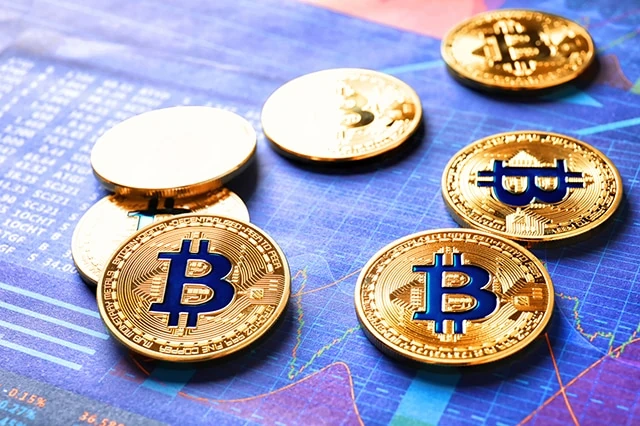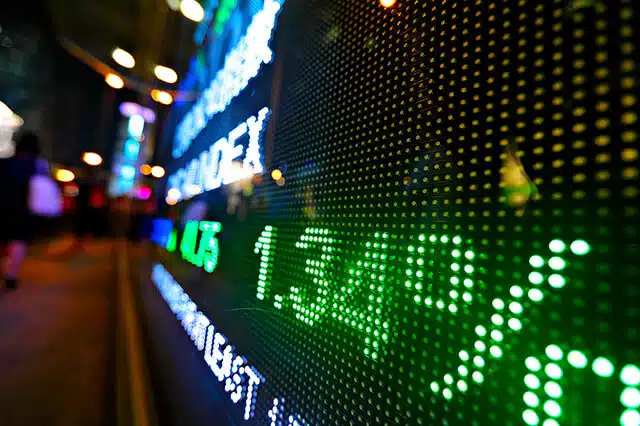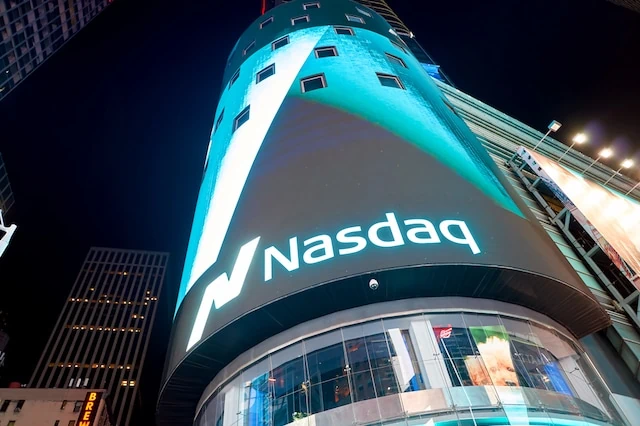Don’t think of the best ETFs for the rest of 2025 as an attack plan—think of them as a preparedness kit.
Exchange-traded funds have become a clear favorite of the “smart money.” According to a recent survey from financial services data and analytics firm ISS Market Intelligence, when asked about how they would invest client assets if a favored manager was available across all types of vehicles, 60% said they preferred ETFs over open-ended mutual funds and separately managed accounts—a huge jump from 49% just a few years ago!
Why? Well, I can think of a host of reasons, but perhaps the two most important are their extraordinary versatility and relatively low fees. Not only can you use ETFs to execute hundreds of strategies across numerous asset classes, but their cost is virtually always lower than any comparable alternatives.
That versatility makes them useful in a wide range of scenarios. Sure, you can put them to work in trends you expect to dominate headlines in 2025. But as we’ve been reminded so far this year, surprises happen! The market doesn’t always move according to plan, so you might also need ETFs that help you roll with those punches. And all the while, you have to keep an eye on the very long term—and ETFs can help you there, too.
With that, let’s talk about the best ETFs for the rest of 2025. And as always, I’ll remind you that this isn’t a list of ETFs everyone should go out and buy tomorrow. Instead, it’s a list of tools that you might either want to stick in your toolbelt right now, or keep in mind for later when you actually need them. Which ones you select will hinge both on your personal investing wants and needs, as well as the factors that ultimately determine the market’s path for the rest of the year.
Featured Financial Products
Disclaimer: This article does not constitute individualized investment advice. These securities appear for your consideration and not as personalized investment recommendations. Act at your own discretion.
The Best ETFs for 2025
They say you can’t please everyone all of the time, and for yet another year, I’ve taken that wisdom to heart as I’ve compiled my list of the best ETFs for 2025.
“Setting the bar low, aren’t you, Kyle?” Not at all! I’m just setting healthy, realistic expectations—not just for reading my annual screed, but for reading any list of the best anythings for any period of time.
Over the past few months, we’ve gotten a new presidential administration, a new congressional makeup, and a new market outlook. And each of us has to balance those factors with our own long-term investing goals, risk tolerances, and time horizons.
No best-of list is going to juggle all of those variables for every possible reader. So instead, the best goal to shoot for is “pleasing everyone some of the time”—by providing a variety of suitable options for a variety of investors so every reader walks away with at least a couple of ideas they can confidently put to work.
As I do every year, I’ll be covering three types of ETFs:
- Core ETFs: I always like to start with a few core ETFs that, if you don’t already own them, you can buy at pretty much any time and hold on to it—not just for 2025, but a lot longer than that.
- Tactical ETFs: These ETFs play on a trend that experts believe will be successful in the year ahead (if not longer).
- Defensive ETFs: These are protective ETFs you might not necessarily buy at the beginning of the year, but that you should be aware of in case you need to play portfolio defense. (And you’ll be unsurprised to hear that these defensive ETFs have become quite popular in 2025.)
This year, I’ll start 2025’s best ETFs with the tactical plays, then move on to the core and defensive funds.
1. Vanguard Dividend Appreciation ETF

- Type: Tactical
- Style: Dividend growth
- Assets under management: $93.1 billion*
- Dividend yield: 1.7%
- Expense ratio: 0.05%, or 50¢ per year on every $1,000 invested
What is VIG?
The Vanguard Dividend Appreciation ETF (VIG) is an index fund that provides access to high-quality companies with a track record of dividend growth.
What does VIG hold?
This Vanguard index fund is benchmarked to the S&P U.S. Dividend Growers Index, which holds stocks that have consistently improved their payouts every year for at least 10 consecutive years. The index excludes the 25% highest-yielding companies that would be eligible to be in the index.
Currently, VIG holds roughly 340 top dividend stocks in the U.S., led by tech giants Broadcom (AVGO) and Microsoft (MSFT), as well as mega-bank JPMorgan Chase (JPM). It also holds Dividend Aristocrats such as Walmart (WMT) and Johnson & Johnson (JNJ). It’s also weighted by size, which means the bigger the stock, the more influence it has on the portfolio. Those four companies I just mentioned? They represent 19% of the fund’s assets!
Why should you consider VIG?
Dividend growth isn’t just about putting cash in your pocket—it’s a sign of a company’s ability to keep churning out higher profits, which is a signal of high operational quality. And while quality is a nice attribute to have pretty much anytime, it’s especially vital during periods of economic instability.
“At this stage of the economic and market cycles, Argus] recommends that investors focus on dividend growth instead of dividend yield,” write Argus Research’s John Eade, President and Director of Portfolio Strategies, and Jim Kelleher, Director of Research. “Specifically, we are bullish on companies that have boosted their dividend at high growth rates for many years consecutively.”
That’s right up VIG’s alley. Unlike most dividend ETFs where dividend yield is the point, Vanguard Dividend Appreciation ETF focuses on dividend growth. As a further nod to dividend quality, VIG excludes the highest yielders from its universe of companies that would otherwise be eligible—because while high yields can be rewarding, they can also be a sign of an unstable or otherwise endangered dividend. Remember: Dividend yield is simply dividend / price. One way to get a higher dividend yield is to raise your dividend. But the other way to get a higher yield is for your stock price to head lower. In some cases, a high yield merely reflects a slumping stock, which could itself reflect a company whose financial stability is sliding.
Vanguard Dividend Appreciation won’t give you much in the way of current yield. Indeed, this dividend ETF’s payout is only a little bit higher than the S&P 500’s. But VIG’s dividend-growth focus should ensure you’re holding better-quality stocks, on average, and that your dividend income will increase over time.
* Vanguard fund assets are spread across multiple share classes, including mutual funds and ETFs alike. Assets listed for each Vanguard ETF in this story are for the ETF share class only.
Want to learn more about VIG? Check out the Vanguard provider site.
Related: How to Invest for (and in) Retirement (Strategies and Investments to Use)
2. Vanguard Mid-Cap ETF

- Type: Tactical
- Style: Mid-cap stock
- Assets under management: $86.2 billion
- Dividend yield: 1.5%
- Expense ratio: 0.04%, or 40¢ per year on every $1,000 invested
What is VO?
The Vanguard Mid-Cap ETF (VO) is an index fund that gives investors exposure to mid-sized U.S. firms.
What does VO hold?
This dirt-cheap Vanguard index fund tracks the broad-based Dow Jones U.S. Mid-Cap Total Stock Market Index. The thing is, the mid-cap world—if we’re going by the standard definition, which is companies that fall between $2 billion and $10 billion in market capitalization—is somewhat limited. As a result, mid-cap ETFs tend to be varying blends of large-, mid- and small-cap stocks. So while VO is predominantly made up of mid-caps, much of its remaining exposure bleeds into smaller large caps. (I’ll explain why that’s a boon in a moment.)
VO is a fairly balanced “cap” fund by industry, though it does have higher weights in industrials (20%), followed by consumer discretionary stocks (15%) and financial services (14%). Top holdings at the moment include electric utility and energy provider Constellation Energy (CEG), engineered aerospace component maker TransDigm Group (TDG), and delivery app DoorDash (DASH).
Why should you consider VO?
Mid-cap stocks typically have a spot among our core recommendations. Aniket Ullal, VP, ETF Data and Analytics for CFRA, an investment research company, says that in the long term, “mid-caps have been surprisingly strong performers, and having a mid-cap ETF is a very targeted holding for core portfolios.”
But mid-cap stocks could also be a smart tactical holding for the rest of 2025.
BofA Global Research, in its midyear outlook for small- and mid-caps (SMID), is cautious about the small-cap Russell 2000, but they like mid-caps thanks to “better [earnings] revisions, less rate/refinance risk and lower tariff risks.” BofA admittedly suggests stock picking over a broad-based fund. However, if you’re looking for ETF exposure, it’s hard to do better than VO, which leans large and has vanishingly thin small-cap exposure, especially compared to other mid-cap ETFs.
Want to learn more about VO? Check out the Vanguard provider site.
Related: 7 Best Vanguard ETFs for 2025
3. Franklin FTSE Brazil ETF

- Type: Tactical
- Style: Single-country (Brazil)
- Assets under management: $218.2 million
- Dividend yield: 5.5%
- Expense ratio: 0.19%, or $1.90 per year on every $1,000 invested
What is FLBR?
The Franklin FTSE Brazil ETF (FLBR) is an index fund that provides single-country exposure to Brazilian equities.
What does FLBR hold?
Franklin’s Brazil ETF tracks the FTSE Brazil Capped Index, an index of large- and mid-sized companies within Brazil. The roughly 75-component fund is currently heaviest in financials (31%), energy (15%), and materials (14%), and also has double-digit weightings in utilities (13%) and industrials (10%). Top holdings include financial services firm Itau Unibanco (ITUB), majority state-owned energy firm Petrobras (PBR), and aircraft manufacturer Embraer (ERJ).
Why should you consider FLBR?
International stocks have broadly outperformed U.S. equities in 2025, and Brazil has been among the best performers, nearly tripling up the S&P 500 for the year-to-date. Those returns have largely been front-loaded, however, with Brazilian stocks flatlining over the past few months over a deterioration of consumer and other confidence metrics. However, BofA Global Research remains positive on both the region and the country for the second half of 2025.
“We argue LatAm could continue to do well thanks to broadly discounted valuations, lower rates/upcoming easing cycles supporting valuations and earnings growth,” a team of BofA analysts say. “In our portfolio, we are overweight Brazil with a preference for domestic names, especially bond proxies with limited earnings risk and quality growth names that could see earnings momentum accelerate this and next year.”
Why Franklin’s ETF specifically? It provides core Brazil exposure for a phenomenally dirt-cheap annual fee.
Want to learn more about FLBR? Check out the Franklin Templeton provider site.
Related: 9 Best Fidelity ETFs to Buy in 2025
4. Utilities Select Sector SPDR Fund

- Type: Tactical
- Style: Sector (Utilities)
- Assets under management: $20.5 billion
- Dividend yield: 2.7%
- Expense ratio: 0.08%, or 80¢ per year on every $1,000 invested
What is XLU?
The Utilities Select Sector SPDR Fund (XLU) is an index fund that invests in utility-sector stocks within the S&P 500.
What does XLU hold?
The XLU ETF holds all utility-sector stocks in the S&P 500, which includes electric, gas, and water utilities; multi-utilities; and independent power and renewable electricity producers. Right now, that’s a roughly 30-stock set of names including NextEra Energy (NEE), Southern Co. (SO), and Duke Energy (DUK).
Why should you consider XLU?
Wall Street prognosticators are a lot more positive on the stock market than they were just a few months ago. Still, they acknowledge the potential for more turbulence during the rest of 2025, and if that comes to pass, utilities could play their traditional defensive role.
“The equity market appears to be pricing an optimistic outlook for the U.S. economy, but we believe there are risks in both directions and investors should not be clearly cyclical or defensive in their sector allocation,” says Ryan Hammond, vice president of U.S. Equity Strategy at Goldman Sachs. “Within defensives, we recommend investors own utilities and real estate, which typically benefit most from lower bond yields.”
However, it’s also worth noting that utilities are increasingly being powered by a newer growth driver: data centers and artificial intelligence.
“From an investing standpoint, what you’re seeing is a real ecosystem being created to support this industry. Of course, it’s the hardware and technology that needs to exist to enable it, and you have the beneficiaries there where valuations arguably are already reflecting that potential,” Osman Ali, Global Co-Head of Quantitative Investment Strategies (QIS) at Goldman Sachs Asset Management, said during his firm’s midyear investing outlook. “But then you have a lot of this [capital expenditure] that’s going to go into power, utility cooling. Some of the things I talked about earlier where the smart investors are now on our side, trying to see what are the opportunities that exist to supply power, utility energy for these large data centers.”
Naturally, if you buy a sector ETF, you run the risk of the entire fund’s portfolio struggling if the sector itself falls on hard times. But in XLU, there’s also some significant single-stock risk—the aforementioned names account for more than a quarter of XLU’s weight, including more than 12% for NEE alone.
However, you’re also receiving a bit of compensation in the form of above-average dividends. Utilities tend to be one of the highest-yielding sectors, and right now, SPDR’s utility ETF doles out more than twice the yield of the S&P 500. Another bonus? State Street recently lowered fees on XLU and its other sector funds by a basis point (a basis point is one one-hundredth of a percentage point), making this already inexpensive utility fund a little cheaper.
Yes, XLU is perhaps one of the most boring, staid funds on the market. But for investors unsure which direction the market’s winds will blow, it could be one of the best ETFs to buy for the rest of 2025.
Want to learn more about XLU? Check out the State Street Investment Management provider site.
Related: How to Choose a Financial Advisor
5. Global X Robotics & Artificial Intelligence ETF

- Type: Tactical
- Style: Thematic (Artificial intelligence)
- Assets under management: $2.9 billion
- Dividend yield: 0.2%
- Expense ratio: 0.68%, or $6.80 annually on a $1,000 investment
What is BOTZ?
The Global X Robotics & Artificial Intelligence ETF (BOTZ) invests in companies that could benefit—in one of several ways—from advances in robotics and AI technologies.
What does BOTZ hold?
Global X sees robotics and AI having a “wide-reaching application, extending far beyond industrial activity.” BOTZ invests with that in mind, building a somewhat tight portfolio of 50 companies across the globe, and across multiple sectors and industries.
As you might expect, information technology is the largest sector—but at a weight of less than 45%, which is far less than many other AI ETFs. It fills that gap with industrials (40%), health care stocks (10%), and a sprinkling of financials, energy, consumer discretionary, and materials stocks.
Why should you consider BOTZ?
As far as artificial intelligence is concerned, the cat is absolutely out of the bag. Chip and software stocks still have growth potential, to be sure, but the whole world knows, and many of these firms are priced for protection.
The Wells Fargo Investment Institute suggests investors broaden their AI horizons:
“We expect the AI theme to broaden, benefiting companies across many sectors and industries typically more removed from the technology-related sectors,” the WFII says. “Over the long term, utilities and industrial equipment (electrical, HVAC generators, water utility infrastructure, midstream energy, nuclear power, and construction materials) are needed to build the infrastructure of a world driven by this emerging technology.”
Global X’s BOTZ has been recovering with the rest of the market and is back in the green for the year-to-date. It could still end up among the best ETFs of 2025 (and 2026) if the risk-on trade continues. That’s because it provides an ideal balance that allows you to remain invested in core AI tech names while also being exposed to companies outside of tech and tech-related sectors.
Want to learn more about BOTZ? Check out the Global X provider site.
Related: 13 Best Long-Term Stocks to Buy Forever
6. SPDR S&P Regional Banking ETF

- Type: Tactical
- Style: Industry (Regional banks)
- Assets under management: $4.2 billion
- Dividend yield: 2.4%
- Expense ratio: 0.35%, or $3.50 per year on every $1,000 invested
What is KRE?
The SPDR S&P Regional Banking ETF (KRE) is an index fund that provides access to high-quality companies with a track record of dividend growth.
What does KRE hold?
If you want diversified exposure to the regional banking industry, you can’t get more breadth than the KRE and its 145 components.
The KRE tracks the S&P Regional Banks Select Industry Index, a modified equal-weighted index of predominantly small- and mid-cap regional bank stocks. That weighting is helpful in preventing significant overexposure to any one company. Even the largest positions, including Citizens Financial Group (CFG), Regions Financial (RF), and Western Alliance Bancorp (WAL), represent less than 3% of assets each.
Why should you consider KRE?
KRE was a popular pick to start the year given 2025’s transition of power in Washington. For instance, independent research firm CFRA, in its breakdown of “Trump 2.0” policies, pointed to a big win for financial stocks in general, and regional banks (among others) in specific.
“Banks of all sizes will benefit from Biden-era regulatory efforts [such as Basel III Endgame, fee limitations, and more] being scaled back and/or abandoned altogether,” CFRA said. “Significantly more openness to bank M&A by prudential and antitrust regulators [is] likely to result in consolidation for regional and large regional banks.”
That didn’t pan out right away, but KRE is now up decently on the year.
Among a handful of regional banking ETFs, KRE stands out both for its superior holdings breadth (145+ stocks vs. just a few dozen for its competitors) and its modified equal-weighting system, which could help the fund benefit more from mergers-and-acquisitions pops than a traditional market cap-weighted fund. That makes it one of the best ETFs for the rest of 2025 and beyond should bank stocks finally take off.
Want to learn more about KRE? Check out the State Street Investment Management provider site.
Featured Financial Products
Related: 10 Best Monthly Dividend Stocks for Frequent, Regular Income
7. iShares Bitcoin Trust ETF

- Type: Tactical
- Style: Cryptocurrency (Bitcoin)
- Assets under management: $84.2 billion
- Dividend yield: N/A
- Expense ratio: 0.25%, or $2.50 per year on every $1,000 invested
What is IBIT?
The iShares Bitcoin Trust ETF (IBIT) is a “pure play” Bitcoin ETF that provides 1-to-1 exposure to the Bitcoin cryptocurrency.
What does IBIT hold?
In a word: Bitcoin.
Why should you consider IBIT?
SEC Chairman Gary Gensler has resigned, and President Donald Trump has replaced him with Paul S. Atkins.
That’s just one of several signals that the incoming administration will be extremely cryptocurrency-friendly.
“Let the crypto community rejoice,” CFRA says. The Trump administration effectively marks the end of the enforcement era, and should herald in guidance and potential rules (which would be beneficial!) for issuers and exchanges. “Expect more openness to banking crypto firms, beneficial tax policies, legislative progress, and discussion of the U.S. government buying Bitcoin (e.g., strategic reserve),” CFRA adds.
Pure-play Bitcoin ETFs allow you to enjoy Bitcoin’s gains without having to own a separate cryptocurrency account. And as far as Bitcoin ETFs go, it’s difficult to argue against IBIT, which is the largest such ETF by assets. IBIT is designed to reflect the fund’s investment exposure to the Bitcoin it owns. By the way: This Bitcoin is held in various accounts, and the private keys associated with this Bitcoin are kept in “cold storage,” which is to say, they’re generated and stored offline, with computers or devices that aren’t connected to the internet—effectively protecting IBIT’s Bitcoin from hacking.
At the start of the year, I warned that IBIT (as well as any other fund that has run up in anticipation of a friendlier administration) might have priced in much of the optimism by the start of the year, and that further gains might be more difficult to come by. Indeed, IBIT did struggle in 2025’s early going, and it has flattened more recently; but a burst in between has resulted in a nearly 20% year-to-date gain.
If Bitcoin resumes its ascent, the iShares Bitcoin Trust ETF will undoubtedly be one of the best ETFs of 2025.
Want to learn more about IBIT? Check out the iShares provider site.
Related: 9 Best ETFs for Beginners to Buy
8. Pimco Active Bond Exchange-Traded Fund

- Type: Tactical
- Style: Intermediate core-plus bond
- Assets under management: $5.9 billion
- SEC yield: 4.8%*
- Expense ratio: 0.60%**, or $6.00 annually on a $1,000 investment
What is BOND?
Pimco Active Bond Exchange-Traded Fund (BOND) is an actively managed bond ETF that typically focuses on higher-quality, intermediate-term debt. However, unlike an indexed bond fund that will simply hold whatever bonds qualify for inclusion in a benchmark index, management will tailor portfolio decisions, taking on greater or lesser risk depending on the market environment.
What does BOND hold?
The ETF’s managers—David Braun, Jerome Schneider, and Daniel Hyman—currently spread their assets across nearly 1,600 holdings. At the moment, BOND is heavily invested in securitized debt (packaged mortgages and other consumer debt), which makes up a little more than 45% of assets. U.S. government bonds account for another 30%, investment-grade credit is weighted at 20%, and remaining assets are sprinkled across high-yield credit, emerging-market bonds, and other debt.
The portfolio’s average effective maturity (how long until the bonds mature) is a little on the long side, at 9.3 years. Meanwhile, BOND has an average effective duration (a measure of risk) is 6.5 years, implying that for every 1-percentage-point increase in interest rates, the fund would experience a short-term decline of 6.5%, and vice versa. Lastly, credit quality is fairly high right now—a little more than 55% of the portfolio’s bonds enjoy investment-grade rating. (Note: More than 40% of the fund’s holdings are considered “not rated,” which doesn’t necessarily mean those bonds have poor quality, it just means they don’t have ratings from the major credit rating firms.)
Why should you consider BOND?
The Federal Reserve lowered its benchmark interest rate three times in 2024, but has left it untouched in 2025 as of this writing (though that’s widely expected to change at the September FOMC meeting).
Rather than betting on bonds directionally with an inflexible index fund, investors might be better off letting experienced managers handle the shifting environment for them. BOND, which earns a Silver Medalist rating from Morningstar, fits the bill.
* SEC yield reflects the interest earned across the most recent 30-day period. This is a standard measure for funds holding bonds and preferred stocks.
** 0.61% gross expense ratio is reduced with a 0.01% fee waiver until at least Oct. 31, 2025.
Want to learn more about BOND? Check out the Pimco provider site.
Related: 7 Best Index Funds for Beginners
9. iShares CMBS ETF

- Type: Tactical
- Style: Commercial mortgage-backed securities (CMBSes)
- Assets under management: $476.4 million
- SEC yield: 3.8%
- Expense ratio: 0.25%, or $2.50 annually on a $1,000 investment
What is CMBS?
The iShares CMBS ETF (CMBS) is an indexed ETF that allows investors to tap into commercial mortgage-backed securities (CMBSes).
What does CMBS hold?
This ETF tracks the Bloomberg U.S. CMBS (ERISA Only) Index, which is made up of CMBSes—bonds collateralized by pools of commercial real estate loans. In the case of iShares’ CMBS ETF, you’re getting roughly 50/50 exposure to two types of CMBSes: agency (issued by a U.S. agency such as Fannie Mae, Freddie Mac, or Ginnie Mae), and non-agency (issued by banks and private lenders).
All told, the portfolio is comprised of nearly 500 of these securities.
Why should you consider CMBS?
Janus Henderson Investors laid out the case for a variety of U.S. securitized debt at the beginning of 2025:
“While corporate credit spreads are trading near their all-time tightest levels, most U.S. securitized sectors … are trading cheaper than their 10-year averages. This pricing disparity may allow securitized investors to experience a more stable path of income and total return. Should the U.S. economy begin to stall, we believe securitized sectors are likely to hold up better than corporate credit spreads. Conversely, if the soft landing continues to unfold, we believe securitized sectors may outperform, as their spreads have more room to tighten.”
Janus Henderson’s outlook showed the potential 1-year return for CMBSes could be 7.5% should spreads narrow to 10-year tights. And should spreads expand to 10-year wides, they could still actually gain 1.1% should spreads expand to 10-year wides—a much better outcome than investment-grade corporates and high-yield bonds, which would be expected to drop by high single digits or low double digits, respectively.
More recently, Janus has reiterated that CMBSes are among ways to gain exposure to the short end of the yield curve for any investors trying to take advantage of any future rate cuts.
CMBS might not be on many investors’ radar, but it has slowly and steadily marched higher all year. Meanwhile, its combination of potential and protection could make it one of the best ETFs to buy for the rest of 2025 and beyond.
Want to learn more about CMBS? Check out the iShares provider site.
Related: 7 High-Quality, High-Yield Dividend Stocks
10. SPDR Portfolio S&P 500 ETF

- Type: Core
- Style: U.S. large-cap stock
- Assets under management: $84.9 billion
- Dividend yield: 1.2%
- Expense ratio: 0.02%, or 20¢ annually on a $1,000 investment
What is SPLG?
The SPDR Portfolio S&P 500 ETF (SPLG) is an index fund that tracks the S&P 500—America’s chief stock-market index, made up of publicly traded stocks representing 500 of the largest U.S.-listed companies.
What does SPLG hold?
The SPDR Portfolio S&P 500 ETF holds the 500 companies in the S&P 500 index—a collection of predominantly large-cap companies. That means it offers exposure to all 11 market sectors, but it doesn’t do so evenly. Right now, technology is the biggest industry weight at more than a third of SPLG’s assets, followed by financials (14%), consumer discretionary (11%), and communication services (10%). But energy, utilities, real estate, and materials each account for less than 3% of assets.
The reason for this imbalance? The S&P 500 is a market cap-weighted index, which means the larger the stock, the more influence it has—and tech contains some of the biggest companies in the world, including multitrillion-dollar firms Nvidia (NVDA), Microsoft, and Apple (AAPL).
Just remember: What’s big today might not be big tomorrow. Stock weights always change, so the S&P 500’s sector weights commonly change over time as the economy evolves.
Why should you consider SPLG?
Financial advisors frequently recommend that you make an S&P 500 tracker—any index fund that replicates the performance of the S&P 500—part of your portfolio’s core. That’s in part because the S&P 500 gives you exposure to a diversified list of 500 blue-chip companies, which provides a balance of growth and income potential.
But that’s also because, if you’re looking for that kind of large-cap exposure, index funds typically do better than your average human manager. According to S&P Dow Jones Indices, in 2024, “65% of all active large-cap U.S. equity funds underperformed the S&P 500, worse than the 60% rate observed in 2023 and slightly above the 64% average annual rate reported over the 24-year history of our SPIVA Scorecards.”
There are only a handful of S&P 500 ETFs, but combined, they account for more than $2 trillion in assets. The SPDR Portfolio S&P 500 ETF (SPLG) is by far the smallest, at about $85 billion in assets. So … why call out the “little” guy as one of the best ETFs for 2025? Well, a good rule of thumb for buying funds is, if all else is equal, buy the cheapest one. And while all S&P 500 trackers boast a low expense ratio, by virtue of an August 2023 fee cut, SPLG’s 2-basis-point fee (a basis point is one one-hundredth of a percentage point) is the cheapest you can find.
“I’m not recommending people make a change,” says Todd Rosenbluth, Head of Research at VettaFi, “but if you’re starting a new position, you might as well save at least 1 basis point.”
Want to learn more about SPLG? Check out the State Street Investment Management provider site.
Related: 10 Best Dividend Stocks to Buy
11. Distillate U.S. Fundamental Stability & Value ETF

- Type: Core
- Style: U.S. value stock
- Assets under management: $1.8 billion
- Dividend yield: 1.4%
- Expense ratio: 0.39%, or $3.90 annually on a $1,000 investment
What is DSTL?
The Distillate U.S. Fundamental Stability & Value ETF (DSTL) is a value fund—that is, it holds stocks that are relatively undervalued compared to other stocks. But what sets DSTL apart is how it determines value.
What does DSTL hold?
DSTL builds its portfolio by taking a universe of the 500 largest U.S. companies, then eliminating any stocks deemed expensive by free cash flow/enterprise value, as well as any companies with either high debt, volatile cash flows, or both. The resultant portfolio doesn’t look a thing like traditional value funds, with health care (23%), technology (22%), and industrials (15%) making up the lion’s share of assets.
Most value funds measure value by metrics such as price-to-earnings (P/E), price-to-sales (P/S), and even price-to-book (P/B). But the Distillate ETF focuses on free cash flow (FCF)—whatever profits are left once a company makes operating and capital expenditures needed to maintain the business—divided by enterprise value (EV), a measure of company size that takes market capitalization, then factors in debt owed and cash on hand.
Why this lesser-used metric? Thomas Cole, CEO and co-founder of Distillate Capital, explains that while many accounting measures, including earnings and even revenues, can be “adjusted,” you can’t adjust cash. Cash is just cash.
Why should you consider DSTL?
For one, it works. Distillate’s value ETF came to life in late 2018. It has returned 14.3% annually since then, and its five-year average annual return of 14% is ahead of the category average.
Also, DSTL makes for a comfortable defensive position if you’re worried about more economic disruption across the rest of the year.
“It’s a very consistent approach, thinking that a much better long-term view of whether a business is likely to deliver the expected FCF that Wall Street anticipates is how they’ve delivered cash flows in the past,” Cole says. “And where we’re concerned about the unforeseen, we eliminate highly levered businesses. Whether you have a stable business or not, if you run into a global pandemic and can’t service debt, it hurts shareholders. It’s critical to preserving capital.”
Want to learn more about DSTL? Check out the Distillate Capital provider site.
Featured Financial Products
Related: 10 Best Fidelity Funds to Buy
12. iShares LifePath Target-Date ETFs

- Type: Core
- Style: Target-date
- Assets under management: $295.5 million*
- Dividend yield: Varies by fund
- Expense ratio: 0.08%-0.12%, or 80¢-$1.20 annually on a $1,000 investment
What are the iShares LifePath Target-Date ETFs?
We’re only counting them as one, but the iShares LifePath Target-Date ETFs are actually a series of funds.
Target-date funds are an all-in-one retirement investment solution that you can theoretically buy at any time, then hold until you retire (or, often, keep holding through retirement). Each target-date fund will be attached to a date the holder is targeting to retire, usually in five-year increments—so, a target-date fund provider will have funds for 2040, 2045, 2050, and so on. For each fund, the manager will own a combination of stock and bond funds, and adjust how much of each they hold over time. These funds typically start aggressively (more stocks than bonds), but the closer the fund gets to the target date, the more conservative the manager gets, buying more bonds and selling more stocks.
iShares’ LifePath series currently has nine target-date funds (2030 through 2070), as well as a retirement ETF that’s meant for people who are very close to or already in retirement.
What do the iShares LifePath Target-Date ETFs hold?
Each LifePath ETF holds more or less the same funds, just in different concentrations. But we’ll use the iShares LifePath Target Date 2045 ETF (ITDE) as an example. It’s currently 86% invested in stocks and 14% invested in bonds. It does this by holding other iShares ETFs, including the iShares Russell 1000 ETF (IWB, large- and mid-cap U.S. stocks), iShares Core MSCI International Developed Markets ETF (IDEV, developed-market international stocks), and iShares 10+ Year Investment Grade Corporate Bond ETF (IGLB, investment-grade corporate debt), among others. Over time, more of its assets will be invested in bond funds, and fewer of its assets will be invested in stock funds.
The iShares LifePath Target Date 2070 ETF (ITDJ), by comparison, is 99% invested in stocks, and just 1% invested in bonds.
Why should you consider iShares LifePath Target-Date ETFs?
The iShares LifePath Target-Date ETFs, which launched in October 2023, are the only target-date ETFs in existence (for now). All other target-date products are mutual funds, and most people invest in them through 401(k)s and other employer-sponsored retirement plans.
But you can buy LifePath ETFs in any kind of account—even plain ol’ brokerage accounts. That makes them an exceedingly flexible product for investors doing their retirement planning.
“It doesn’t make sense for [investors with advisors] because they don’t want to pay an advisor just to own one ETF,” VettaFi’s Rosenbluth says. “But if you’re doing this on your own and you have a plan in mind, [the iShares target-date ETFs] are good products.”
* Assets listed are across all LifePath ETFs.
Want to learn more about the LifePath target-date ETFs? Check out the iShares provider site.
Related: Best Target-Date Funds: Schwab vs. Vanguard vs. Fidelity
13. Invesco S&P 500 Low Volatility ETF

- Type: Defensive
- Style: U.S. low-volatility stock
- Assets under management: $7.9 billion
- Dividend yield: 1.8%
- Expense ratio: 0.25%, or $2.50 annually on a $1,000 investment
What is SPLV?
The Invesco S&P 500 Low Volatility ETF (SPLV) is an index ETF that invests in companies determined to have low volatility.
What does SPLV hold?
The SPLV holds the 100 stocks from the S&P 500 Index that have the lowest realized volatility over the past 12 months. Volatility here, Invesco says, “is a statistical measurement of the magnitude of up and down asset price fluctuations over time.” The less volatile the stock, the greater its weighting every three months, when the fund rebalances. But this doesn’t result in wild single-stock weights; right now, for instance, top holdings Atmos Energy (ATO), Evergy (EVRG), and WEC Energy Group (WEC) each make up just a little more than 1% of assets.
From a sector perspective, SPLV is heavy in exactly the stocks you’d expect it to be. Utilities represent 21% of assets, and consumer staples account for 16%. That’s pretty normal. But there are a few surprises. Financials and industrials—a pair of cyclical sectors—are the Nos. 2 and 4 sectors by weight, at 17% and 10%, respectively.
Why should you consider SPLV?
Market volatility usually goes hand-in-hand with big drops in stocks. So, naturally, low-volatility stocks (which you can buy through low-volatility ETFs) are considered a way to hedge against a downward swing in the market. I said in January that the Invesco S&P 500 Low Volatility ETF could be one of the best ETFs for 2025 if we get plenty of turbulence throughout the year. Well, we did; and during the near-bear market, SPLV massively outperformed the S&P 500.
“If you are concerned about market volatility, there’s a couple of routes to go within the equity space—the simple route is, instead of buying the S&P 500, buying low volatility with SPLV,” VettaFi’s Rosenbluth says.
But he added a fair warning that’s typically associated with any low-vol product: “You’re likely to outperform in a choppy or down market, but you will underperform in an up market.” Indeed, while the SPLV is still sitting on a respectable gain in 2025, the S&P 500 took the year-to-date lead once the market rebounded and surged to new all-time highs.
Want to learn more about SPLV? Check out the Invesco provider site.
Related: 9 Best Dividend Stocks for Beginners
14. ProShares Short S&P500

- Type: Defensive
- Style: Inverse stock
- Assets under management: $1.1 billion
- Dividend yield: 5.2%
- Expense ratio: 0.89%, or $8.90 annually on a $1,000 investment
What is SH?
The ProShares Short S&P500 (SH) is a fund that, very simply put, goes up when the market goes down. More specifically, it provides the inverse daily return of the S&P 500, which means if the S&P 500 declines by 1% on Monday, SH will gain 1% (minus expenses, of course).
What does SH hold?
This is the most complicated portfolio of any fund on this list. SH primarily holds a number of futures, swaps, and Treasury bills to replicate the inverse-S&P 500 performance it’s looking for. While the average investor should always “look under the hood” in any ETF they buy, in this case, doing so will be more confusing than educational.
Why should you consider SH?
“Always have an escape plan.” It’s a sentimental line delivered by Desmond Llewellyn’s Q during his farewell in The World Is Not Enough … and it’s darn fine advice for any tactical investor. Thing is, while one of the best ways to avoid deep losses in stocks is to not own stocks, if you’re reading this, you probably don’t want to sell your stocks. For one, you would lose any attractive “yields on cost” (the actual dividend yield you receive from your initial cost basis) on stocks you’ve owned for a while. And if you time the market wrong, you could miss the rebound.
One alternative? Hedge the market by buying shares of SH if you think the market is in for pain. If you’re right, you can offset some of the losses that your long holdings might incur during a down market—like many investors were rewarded for doing in February 2020 when it became apparent that COVID-19 was going to hit the U.S.
SH has its own risks. For one, that inverse exposure is only on a daily basis—over a long period of time, it’s not a perfect 1-for-1 relationship. The fund could, for instance, go up 8% across a year in which the S&P 500 declines 10%. And naturally, if your stocks go up, your portfolio’s gains won’t be as great as they would’ve been.
But it’s a better risk than jettisoning your stocks. And it’s a more manageable hedge than inverse leveraged ETFs. Still, only tactical investors with high risk tolerance should consider this ETF.
Want to learn more about SH? Check out the ProShares provider site.
Related: The 10 Best ETFs to Beat Back a Bear Market
15. Global X Nasdaq 100 Covered Call ETF

- Type: Defensive
- Style: Covered call
- Assets under management: $8.2 billion
- Dividend yield: 11.1%
- Expense ratio: 0.60%, or $6.00 annually on a $1,000 investment
What is QYLD?
The Global X Nasdaq 100 Covered Call ETF (QYLD) is an index ETF that generates income by selling covered calls: an income-generating options strategy in which an investor sells call options on a stock or fund while owning an equivalent amount of shares of that stock or fund. In QYLD’s case, the strategy centers around the Nasdaq-100 Index, which is made up of the 100 largest non-financial companies listed on the Nasdaq Stock Exchange.
What does QYLD hold?
This Global X fund holds the 102 stocks (remember: companies are occasionally represented by more than one share class) of the Nasdaq-100. Then every month, it sells one-month, at-the-money call options on the Nasdaq-100. These options are held until one day before the expiration date, then they’re liquidated at a volume-weighted average price, which is determined at the close.
Why should you consider QYLD?
In short, when you sell covered calls, you receive a premium for selling the call options. If the underlying asset’s price rises above the call price at some point before the option expires, you’ll likely be assigned, and your shares will be called away. If the price remains below the call price, the option will expire worthless. Either way, you keep the premium. The ultimate effect of this strategy is that you constantly generate income while protecting against downside in the assets you hold, though you limit the amount of upside you can enjoy.
Hence, QYLD could be one of the best ETFs to buy for 2025 if you need defense. But you shouldn’t necessarily buy and hold it from the start of the year.
Want to learn more about QYLD? Check out the Global X provider site.
Related: 7 Best High-Dividend ETFs for Income-Hungry Investors







